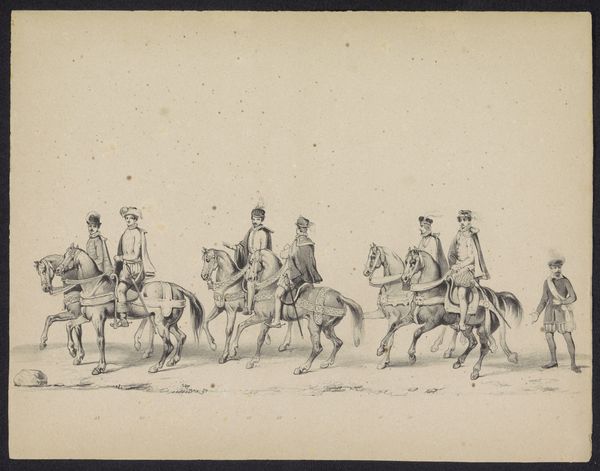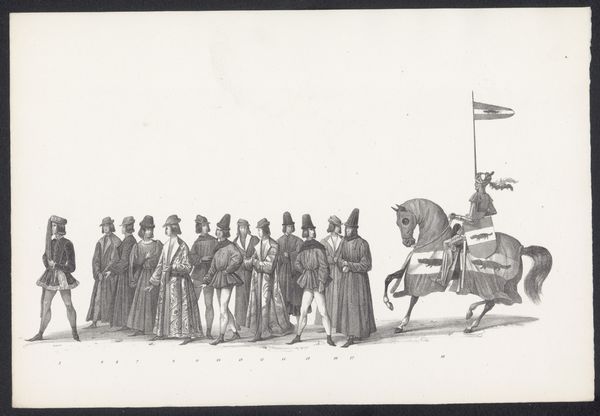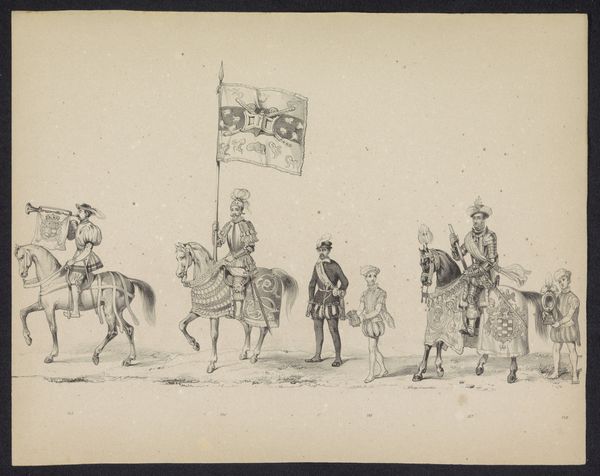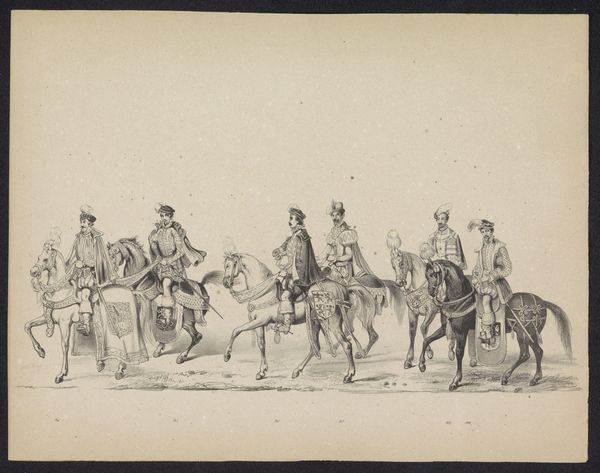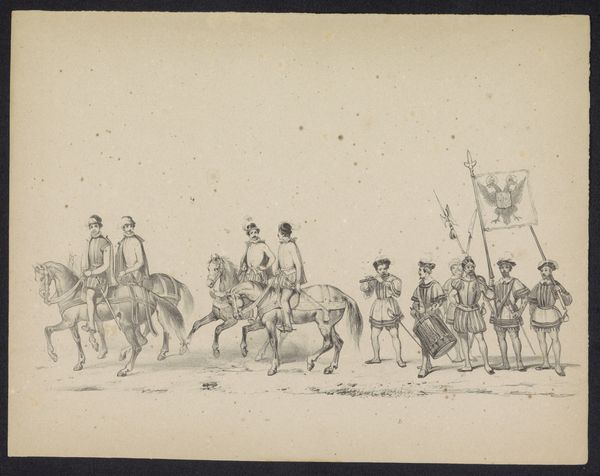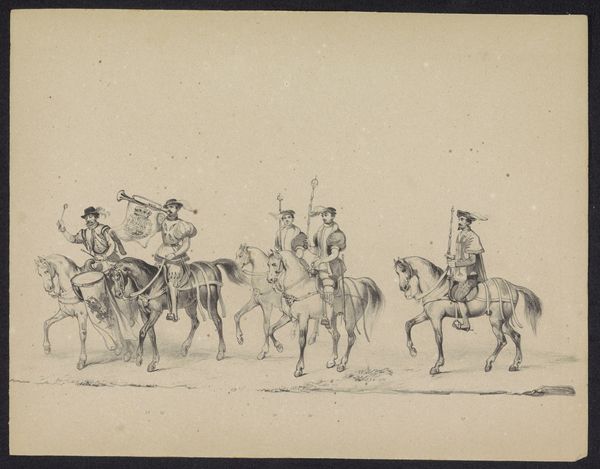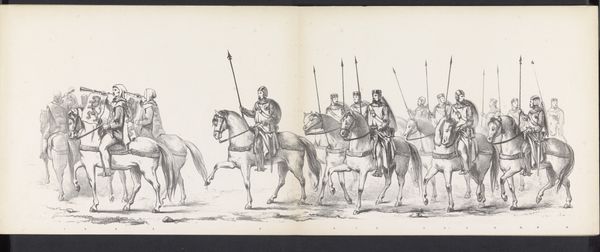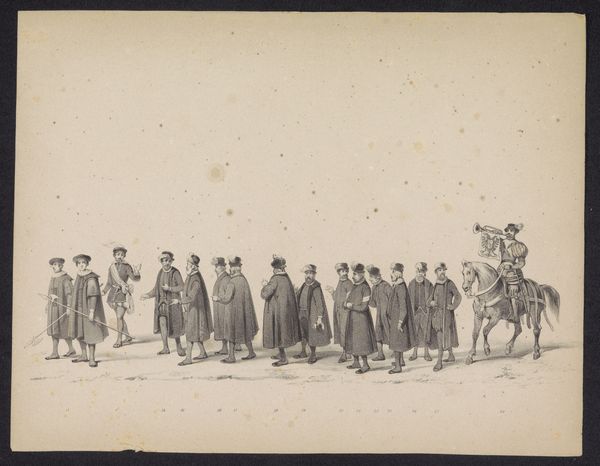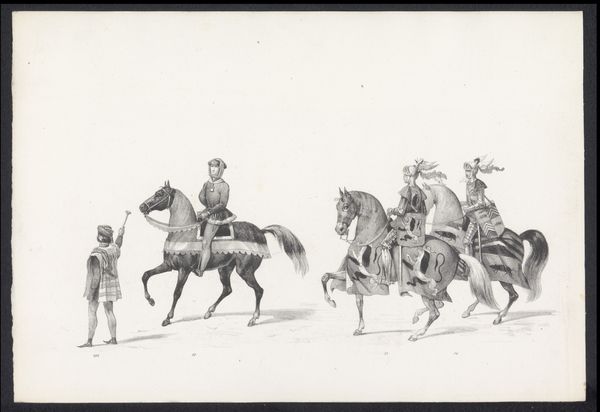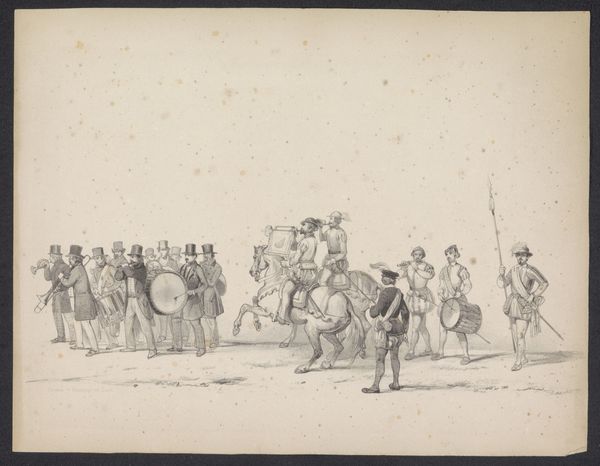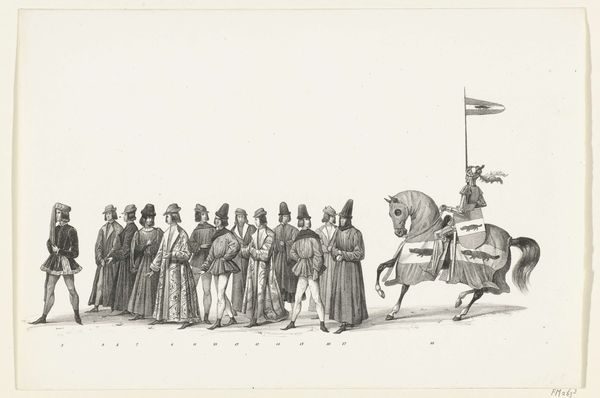
Maskerade van de Utrechtse studenten, 1846 (plaat 12) 1847
0:00
0:00
carelchristiaanantonylast
Rijksmuseum
drawing, ink, pen
#
drawing
#
narrative-art
#
pen sketch
#
ink
#
pen
#
genre-painting
#
realism
Dimensions: height 240 mm, width 310 mm
Copyright: Rijks Museum: Open Domain
Curator: Here we have "Maskerade van de Utrechtse studenten, 1846 (plaat 12)," an ink and pen drawing made around 1847 by Carel Christiaan Antony Last. It’s currently held in the Rijksmuseum. Editor: It looks like a historical procession caught in a fleeting moment. Stark, yet somewhat theatrical, as if they're parading on a very old stage. Curator: Indeed. Note the artist's skillful use of line to create form and texture. The intricate details on the riders' costumes, the subtle shading giving weight to the figures. It is also interesting that Last employs an almost hyper-realistic depiction while the piece remains ambiguous—perhaps hinting at something between observation and caricature. Editor: I read it more critically. The "maskerade"—masquerade—speaks volumes about identity, particularly within student societies of that era. Class distinctions, the performance of social roles, the subtle power dynamics at play—Last gives us a slice of Dutch society viewed through the lens of youthful spectacle. These events served to legitimize status hierarchies through seemingly harmless entertainment. Curator: Precisely. You bring up a good point about context. Though seemingly spontaneous, the calculated arrangement is significant. Consider the interplay between the figures on foot versus those on horseback and how that visual arrangement informs a narrative structure. Editor: I can't help but think about the social exclusivity inherent in these gatherings. Who was invited? Whose voices were amplified while others were marginalized? It's a genre painting that serves as both a window into and a critique of 19th-century Utrecht. It makes me curious about its reception—who laughed along, and who felt excluded by the joke? Curator: Very insightful. The varying levels of detail applied to the costumes and characters draws our focus to key players within this spectacle—perhaps emphasizing their roles within the university or broader societal structures. Editor: This has shown me that we are more than passive spectators; Last urges us to consider those often left out of the picture when chronicling privileged circles. The image isn’t just aesthetically constructed—it carries the weight of a cultural performance, complete with its unspoken rules. Curator: Absolutely, examining it through a combined lens reveals both its artistic ingenuity and sociopolitical implications. Editor: A blend of aesthetics and cultural study, enriching how we read into historical documents that at first glance seem simple or observational.
Comments
No comments
Be the first to comment and join the conversation on the ultimate creative platform.



